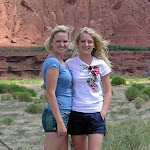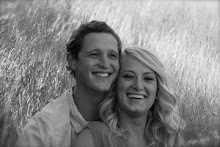 Joe Fornabaio for The New York Times Tucker Andersen, left, and Dave Obelkevich have run the New York City Marathon all 33 years since the 1976 inception of the five-borough race.
Joe Fornabaio for The New York Times Tucker Andersen, left, and Dave Obelkevich have run the New York City Marathon all 33 years since the 1976 inception of the five-borough race.There is a certain obsessive allure to being a streaker.
Before you snicker, a “streaker,” as it relates to the running world, is completely clothed — someone who has run a certain number of consecutive races.
Tucker Andersen and Dave Obelkevich are the only people to have run every New York City Marathon since the race expanded to its five-borough form in 1976. For both, it’ll be their 34th straight year come Nov. 1.
And in Chicago this Sunday, Larry Moon will run with eight other men who have participated since that race began in 1977, bringing their number to 32. (In 1987, the Chicago Marathon was not held because of sponsorship issues.)
As their races approach, all three men report a sense of familiar anticipation and adrenaline, as if they are preparing to meet an old friend they cannot let down.
Whether runners are racing their 3rd or 30th straight marathon, the celebratory atmosphere of the days leading up to the race helps relieve the pressure to return to the starting line. Worries about injuries and sketchy weather forecasts fade.
“It’s a building emotional high,” Mr. Andersen, 67, who lives in Connecticut and Manhattan, said about the days leading up to New York’s race. “You’re seeing all the signs for the marathon, you see the foreigners across the city, and in Central Park, there’s a total different pace. You hear people running by you in different languages.”
This week in Chicago, crisp fall weather has returned after two years of dangerously high temperatures. In 2007, officials stopped the race after three and a half hours when the thermometer reached 89 degrees and water stations ran out. Sunday is forecast to be cloudy, with a high of 48 degrees.
“I’m ready to jump up and down with joy,” Mr. Moon, 68, said. “It’s gone from a little too warm to perfect weather conditions for running.”
All three men say they are not in as good as shape as they would like to be. Time — along with arthritis, plantar fasciitis and upper respiratory infections — have taken a toll.
“The difference between now and 1976 is that I want to keep going and finish,” said Mr. Obelkevich, 66. “I used to want to do a really fast time, but that’s by the boards now.”
Fast is relative. Mr. Obelkevich, who ran his personal best in 1982 in 2 hours 40 minutes 34 seconds, still has a goal: to break 4:15 and qualify for the Boston marathon. He ran 4:03:42 last year and thinks it’s possible, despite battling a terrible cold that sidelined him for 10 days in September.
He will run the Steamtown Marathon in Scranton, Pa., on Sunday, followed by the Marine Corps Marathon in Arlington, Va., on Oct. 25, and New York a week later. Three weeks later he’ll run the Knickerbocker 60K (37.2 miles) in Central Park.
Why?
“Why not? They’re there,” said Mr. Obelkevich, a retired city high school music teacher who still plays his violin in chamber music groups when not running.
Mr. Andersen, an investing consultant, said he changed his self image by becoming a runner in the 1970s. The first race he ran, in 1975, was the Long Beach Island 18-Mile Run in New Jersey — and, this Sunday, it will be his longest streak: 35 years.
It is also the only long run he now does in the months leading to the New York City Marathon and, despite the way he gives up ice cream and McDonald’s in the month beforehand, his body breaks down on schedule right after.
His massage therapist will be skeptical about his running New York, he knows, and his wife will tell him not to do it. But always, a few days before the marathon, the aches suddenly go away and, as he put it, “You’re in tune.”
So far, nothing — even cracked ribs — has failed to break the streak for all three runners. After Chicago race officials closed the course in 2007, when Mr. Moon was at Mile 18, they told him they would count all streaks no matter when the runners stopped; he went back later that afternoon to complete the final 8.2 miles. In 1987, the year the race was canceled, Mr. Moon ran a 50-kilometer race along the city’s lakefront around the same time in October.
Mr. Moon, who had run track in high school in Iowa, decided to quit smoking and begin running on Jan. 1, 1977, after seeing unflattering photos of himself. That year he ran the first Mayor Daley Marathon, as it was called, and he was hooked.
Why does he maintain his membership in the alumni group, as Chicago calls its streakers? ”Just for my own sake,” he said, explaining that every pound shows on his 5-foot-5-inch frame. “I dread the day I miss the marathon; I’d probably balloon up into a roly-poly person.”
In New York, Mr. Andersen and Mr. Obelkevich are part of an illustrious group of 20-year-plus streakers that includes, among others, David Laurance, 57, who has run every New York City marathon since 1977. The top women include 64-year-old Jillian Lazaridis (26 consecutive marathons) and 72-year-old Billie Moten (23 marathons).
Virtually every streaker offers first-timers this advice: Don’t run for record time; just enjoy the experience.
“Talk to people — you’re going to have 42,000 others along with you, so really enjoy it,” Mr. Obelkevich said. He also advises keeping a diary the week before and after the race, since “you’ll never have a first marathon again.”
And who knows? Perhaps it will be the beginning of a streak.
A few years ago, Mr. Andersen had T-shirts printed to commemorate his and Mr. Obelkevich’s accomplishment, if not to challenge his competition. The shirt reads: “Finisher, Every New York City Marathon, 1976 — ????” And written below, inside the shape of a stop sign, are the words, “No Age Limit.”
“It’s certainly not time to stop,” Mr. Obelkevich said. “That’s a four-letter word.”





